Subphylum Vertebrata Rank Species | Higher classification Bush vipers | |
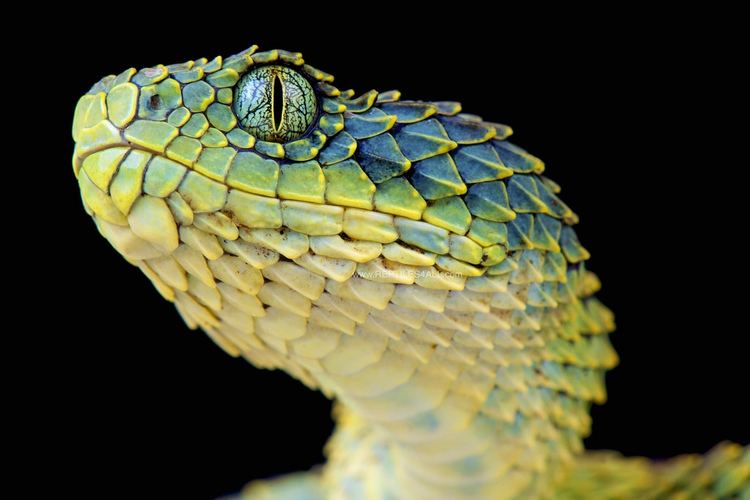 | ||
Similar Bush vipers, Snake, Vipers, Reptile, Atheris hispida | ||
A bela e medonha serpente atheris squamigera
Atheris squamigera, common names green bush viper, variable bush viper, leaf viper, and others, is a venomous viper species endemic to west and central Africa. No subspecies are currently recognized.
Contents
- A bela e medonha serpente atheris squamigera
- Atheris squamigera
- Description
- Common names
- Geographic range
- Habitat
- Breeding in captivity
- Venom
- Taxonomy
- References
Atheris squamigera
Description
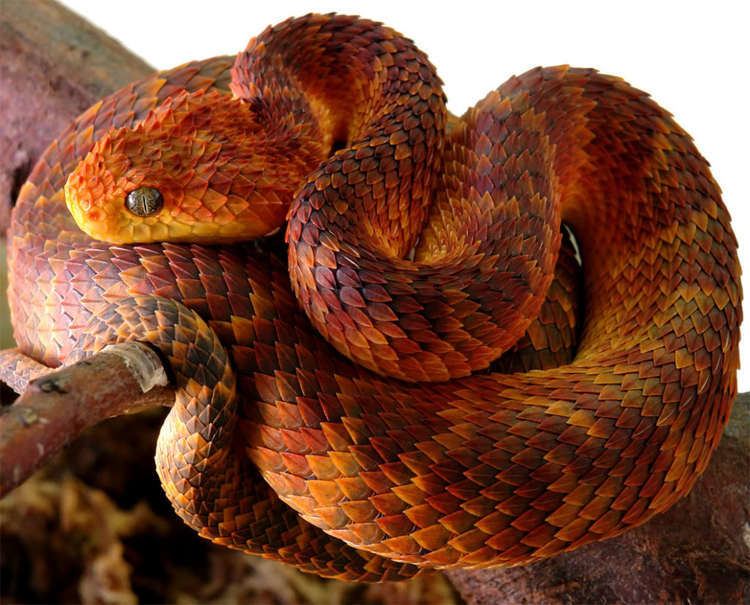
It grows to an average total length (body + tail) of 46 to 60 cm (about 18 to 24 inches), with a maximum total length that sometimes exceeds 78 cm (about 31 inches). Females are usually larger than males.

The head is broad and flat, distinct from the neck. The mouth has a very large gape. The head is thickly covered with keeled, imbricate scales. The rostral scale is not visible from above. A very small scale just above the rostral is flanked by very large scales on either side. The nostrils are lateral. The eye and the nasal are separated by 2 scales. Across the top of the head, there are 7 to 9 interorbital scales. There are 10 to 18 circumorbital scales. There are 2 (rarely 1 or more than 2) rows of scales that separate the eyes from the labials. There are 9 to 12 supralabials and 9 to 12 sublabials. Of the latter, the anterior 2 or 3 touch the chin shields, of which there is only one small pair. The gular scales are keeled.
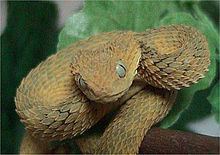
Midbody there are 15 to 23 rows of dorsal scales, 11 to 17 posteriorly. There are 152 to 175 ventral scales and 45 to 67 undivided subcaudals. It is possible that there is a variation in morphometric characters related to habitat:
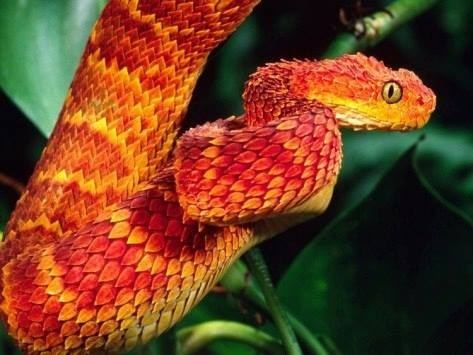
The coloration is the same in some populations, but variable in others. The dorsal color varies from sage green or light green to green, dark green, bluish, olive or dark olive brown. Rare specimens may be found that are yellow, reddish or slate gray. The scales have light-colored keels and sometimes yellow tips that form a series of 30 or more light crossbands or chevrons. On the tail, there are 10 to 19 chevrons: not always clearly defined, but usually present. The ventral edge of the dorsum has light spots in pairs. An interstitial black color is visible only when the skin is stretched. The belly is yellow or dull to pale olive; it may be uniform in color, or heavily mottled with blackish spots. The throat is sometimes yellow. The tail has a conspicuous ivory white tip, 7 to 12 mm long, extending back over 10 subcaudals.
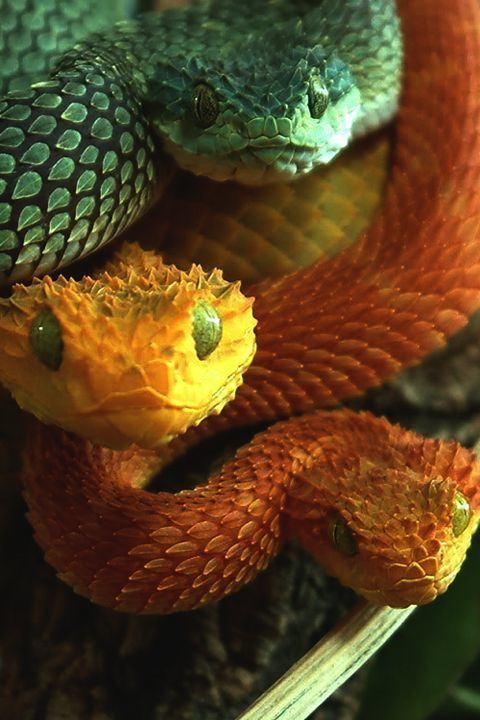
Neonates have a dark, olive coloration with wavy bars, paler olive or yellowish olive with fine dark olive margins, bars at 5 mm (0.20 in) intervals, and a belly that is paler greenish olive. The adult color pattern develops within 3 to 4 months.
Common names
Green bush viper, variable bush viper, leaf viper, common bush viper, bush viper, tree viper.
Geographic range
It is found in West and central Africa: Ivory Coast and Ghana, eastward through southern Nigeria to Cameroon, southern Central African Republic, Gabon, Congo, DR Congo, northern Angola, Uganda, Tanzania (Rumanika Game Reserve), western Kenya and Bioko Island.
The type locality is given as "Near the river Gaboon, Guinea" [Gabon].
Habitat
Found mostly in rainforest. Said to prefer relatively low and thick, flowering bushes.
Breeding in captivity
They require a very high level of humidity to breed. In one case, males and females were kept separate from January to the end of November. Two females became gravid (with one observed mating). Each produced eight young: a smaller percentage were yellow (possible recessive gene), most being green. In each brood, there was also one non viable green specimen. Some of the neonates fed readily on frogs, while the others had to be force-fed pinkie mice. All fed independently after a few months.
Venom
Bites from this particular species have resulted in at least one report of severe hematological complications as well as two deaths.
Taxonomy
A number of subspecies may be encountered in literature. These include:
Furthermore, specimens from Dimonika and Menengue in Congo are sometimes treated as a separate species: A. laeviceps. It has been distinguished as having a group of small scales on top of the head, a row of scales that separates the suboculars and the upper labials, as well as a yellow coloration.
